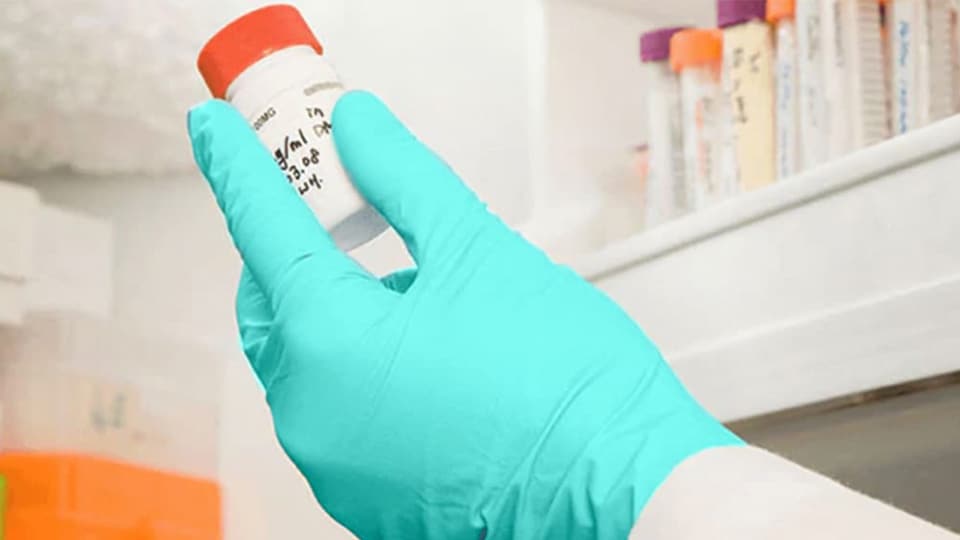Biologics - large, complex molecule medications that typically offer a better therapeutic outcome for patients than traditional medications – are one of the fastest-growing sectors in the pharmaceutical industry.
In the age of the COVID-19 pandemic, it became exponentially important for pharmaceutical companies to optimize their temperature-controlled supply chains, or cold chains. This is especially true when you factor in the extremely high value of many biologic drugs, where mishandling has the potential to have a serious impact not only on patients, but also on your bottom line, brand image, and market share.
Cold chain logistics challenges and how to overcome them
Pharmaceutical companies face a variety of challenges when managing complicated cold chains. Shipments pass through a variety of environments and handlers. It's critical that strict temperature requirements are maintained and that you have full visibility from end to end.
According to Ester Van den Bossche, Senior Manager for UPS Healthcare™ Cold Chain Packaging, "any deviations in temperature could affect the safety and efficacy of these drugs. The challenge is how to mitigate the risk."
On-time delivery is another matter of urgency when it comes to biologics shipments. Having your cargo get lost somewhere in the middle of an unsecured cold chain may have implications on your revenues, brand image, and market share. It's part of the reason why supply chain visibility tools, are crucial for pharmaceutical companies that manage cold chains.
Four best practices to incorporate into your cold chain logistics
These four practices may help you improve your temperature-controlled shipping:
1. Utilize cold chain packaging solutions
Optimized tertiary cold chain packaging may be one of the best ways to ensure the efficacy and safety of temperature-sensitive biologics. "Packaging can be one of the first lines of defense to help ensure product integrity, maintain potency, and potentially prevent product spoilage," says Van den Bossche. "Inappropriate packaging can be one of the main causes of spoilage."
Optimized packaging may also have a substantial impact on your bottom line. With reduced spoilage, reduced shipping charges, reduced inventory requirements, and even reduced shipping costs due to lower weight, companies may potentially save thousands of dollars.
Through further packaging developments, our customers cut down on further waste by using the sustainable, eco-friendly packaging solutions we offer through the UPS Cold Chain Packaging program.
Rather than try to figure out the best packaging for your products on your own, you can consult with healthcare packaging experts at UPS Healthcare.
2. Make sure you have a contingency plan
Expecting the unexpected is critical for cold chain logistics professionals.
Van den Bossche explains that, "In an ideal world, everything goes smoothly. But there are always unexpected incidents, from weather to natural disasters like wildfires and floods. During all these incidents, the supply chain can be disrupted. It's always a good idea to plan contingency solutions." And as cold chain logistics increase in complexity and length of supply chain, temperature-sensitive biologics are exposed to greater levels of risk, raising the chances of spoilage.
The importance of advance contingency planning is clear, particularly when it comes to the bottom line. Van den Bossche says: "It's very important to have these procedures in place in advance, so that when the incident happens, we can step in with a pre-arranged contingency plan and protect your shipments when they're at risk, which is great for your bottom line."
Logistics providers can assist pharmaceutical companies by helping them create a plan that identifies and helps mitigate risk.
"We have a special product called UPS Premier™ that helps us intercept at-risk packages and intervene according to the preapproved business plan, which is especially important for temperature-sensitive products," says Li. Providing an added layer of insurance protection, UPS Premier delivers all of the above but also compensates shippers for any loss, offering extra peace of mind.
3. Invest in monitoring tools for better visibility
Disruptions in the cold chain may put temperature-controlled shipping products at risk. Monitoring tools can help to protect critical shipments, and help make sure they arrive at the right time and in the right condition.
There are two different methods of temperature monitoring: active and passive. Active monitoring gives you updates on your shipment's temperature and status. It's generally used for especially important shipments, such as clinical trials, rather than more standard cold chain shipments.
The right logistics provider can offer monitoring tools that can help your business gain end-to-end visibility into the cold chain, potentially decreasing the rates of product spoilage and helping make sure your customers have a higher satisfaction rate.
According to the UPS Healthcare Vital Signs survey, 65% of respondents think outsourcing to a 3PL's expertise could boost efficiency through the use of shipping and product stability data to plan for more robust protection. There are plenty of tools that can help to provide visibility across the supply chain.
4. Optimize for the last mile
During last mile distribution, the risk facing cold chain shipments is potentially greater than it is at any other point in the supply chain. Last mile shipments frequently have to travel through a vast range of different environments, and pharmaceutical companies may have fewer opportunities to conduct ambient temperature environment studies for all the different shipping lanes that come into play.
There's also the issue of on-time delivery. Getting your biologics shipment delivered on time and free of any temperature excursions isn't always easy. From address errors to mechanical issues, there are plenty of potential pitfalls.
Bottom line
The integrity of biologics shipments is crucial, which is why temperature-controlled shipping solutions like cold chain packaging and monitoring are so vital. Contact us if you're looking for ways to improve efficiency in your pharmaceutical cold chain or learn more about our biopharma logistics solutions.
Note: The original content was published June 28, 2020.





